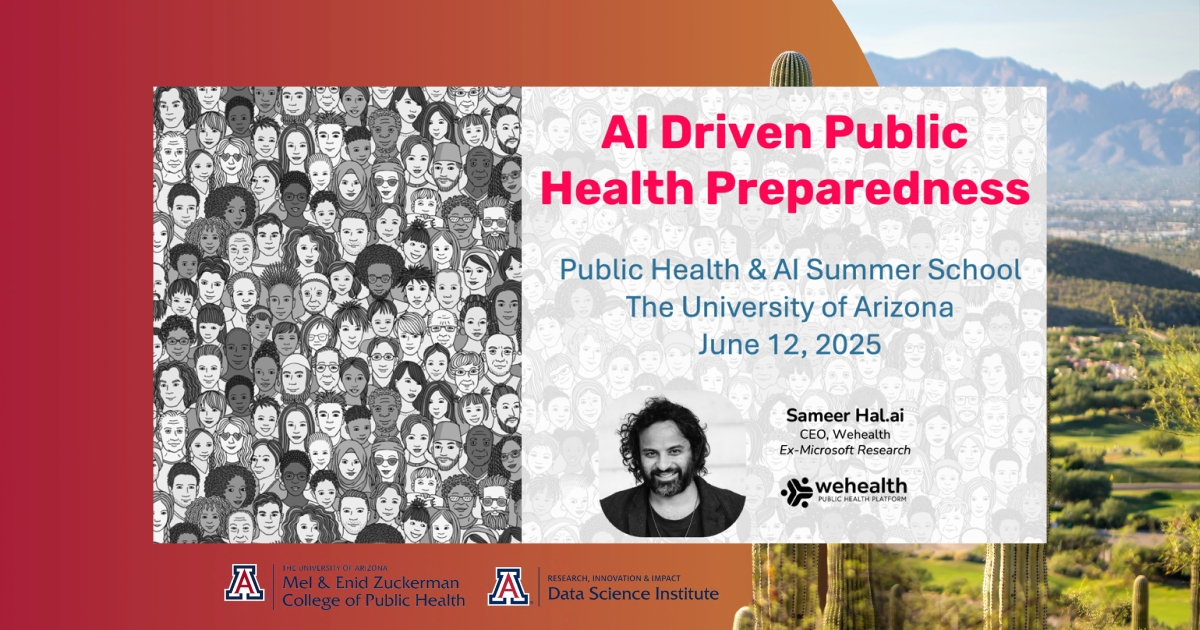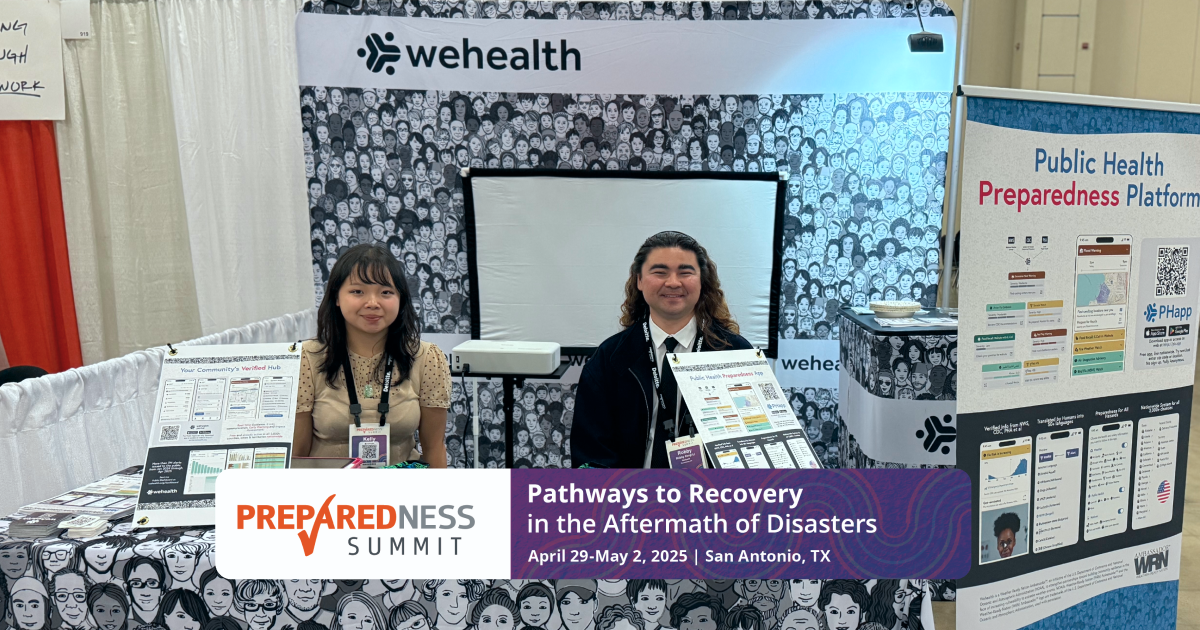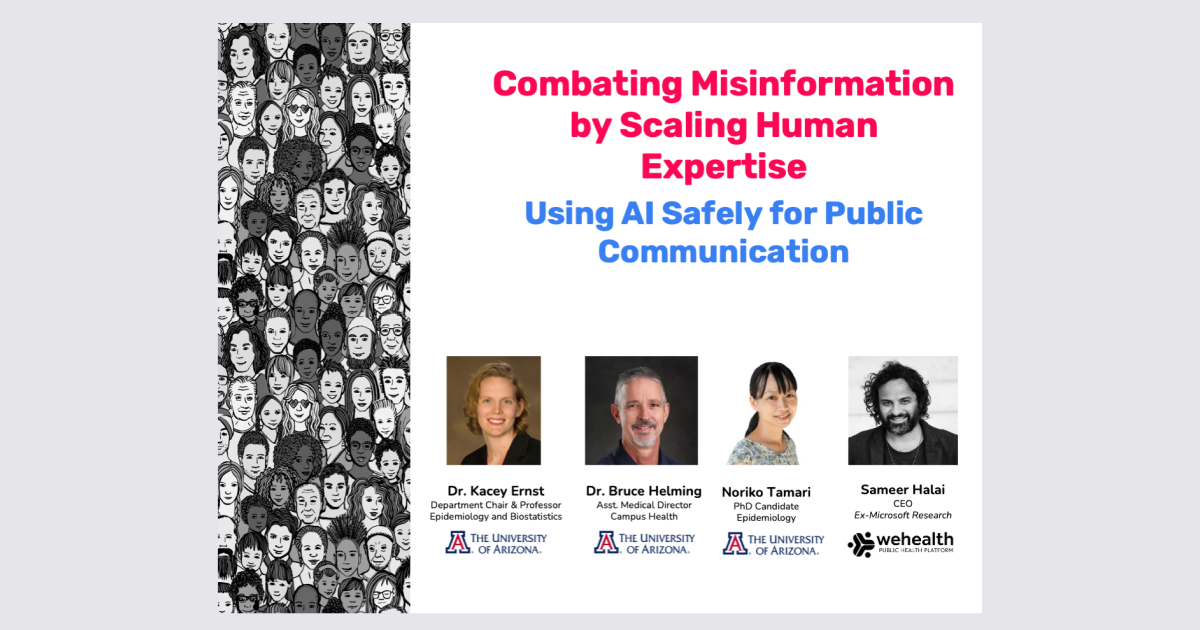PHapp at Preparedness Summit 2025 & National Preparedness Month Campaign Launch
PHapp was released to the public on Apr 2, 2025 as a downloadable app and a web app. It was announced at the Preparedness Summit in San Antonio on...
2 min read
 Sameer Halai
:
Jun 16, 2025 7:15:00 AM
Sameer Halai
:
Jun 16, 2025 7:15:00 AM


In an era where false information can spread faster than the facts, getting the right message to the right person at the right time has become a big challenge in public health. At the Public Health & AI Summer School (June 2025 agenda) hosted by the University of Arizona, I had the opportunity to present how Wehealth is tackling this challenge using a human-centered, AI-powered approach. [Slides] [Event coverage].
Our public health system is decentralized, with over 3,000 counties and territories each managing their own messaging and response. This decentralization can lead to:
Worse, the information ecosystem itself has become more chaotic. According to the Lloyd’s Register Foundation World Risk Poll, false information is now the #1 concern among people globally. Yet, trusted public health voices still struggle to be heard.
At the same time, disparities in English language proficiency, access to digital tools, and healthcare resources make it harder for marginalized populations to receive and act on critical information—especially during emergencies like extreme heat events or pandemics.
Wehealth is building what we call the AI-assisted communication loop—a 4-step system that strengthens trust, reach, and relevance in public health messaging:
We ingest and normalize trusted content from sources like the CDC, NWS, and local health departments, using both structured APIs and unstructured web content.
We personalize the message using a combination of environmental data, local health indicators, and individual-level risk factors (e.g., age, chronic conditions, ability to cool down in heat).
This enrichment step includes:
We broadcast the enriched information via a wide range of communication tools:
Our model, phAI (Φ), is a custom-built AI engine designed specifically for real-time, critical public health messaging with safety, personalization, and trust built in.
The loop doesn’t stop at broadcasting. We collect feedback, measure engagement, and help users take informed actions. For example, during a heat wave, a resident might receive a message that says:
“Stay indoors between 12–4pm. Check your medications for heat sensitivity. The nearest cooling center is at 123 Main Street.”
Using AI for public communication brings real risks—but also real opportunities. That’s why humans are always in the loop at Wehealth. Here’s how we ensure safety and trust:
Wehealth’s AI even checks its own outputs—flagging discrepancies, triggering alerts, and enabling continuous improvement.
Our solution isn’t just for the public—it’s also built for the people who serve the public.
Our goal is to make it easy, fast, and safe for public health agencies to communicate during high-stakes moments—while giving them the flexibility to customize for local needs.
Wehealth is more than a technology company, we’re building a public good in collaboration with forward-thinking public health departments, researchers, and civic leaders.
We invite you to join our expert community to participate in our monthly meetings, share feedback, and help shape the future of trusted public health communication.

PHapp was released to the public on Apr 2, 2025 as a downloadable app and a web app. It was announced at the Preparedness Summit in San Antonio on...

At Wehealth, we're committed to revolutionizing public health communication. At this year’s NACCHO 360 conference, in collaboration with our partners...
 Read More
Read More